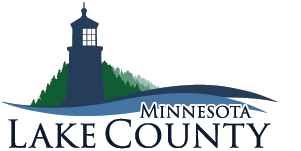Cloquet River
The Cloquet River Watershed is one of Minnesota’s 80 major watersheds. Located in the Lake Superior basin, it drains roughly 793 square miles across Lake and St. Louis counties. Originating at the outlet of Katherine Lake in the Superior National Forest, the Cloquet River flows approximately 100 miles before its confluence with the St. Louis River, which ultimately flows to Lake Superior. There are a number of dams within the watershed, but compared to other watersheds in MN, the Cloquet has a relatively small percentage of streams that have been altered or channelized.
Nearly 80% of the watershed is forested, and lakes are prominent on the landscape. While less than 1% of the land consists of urban development, development pressure remains moderate as areas continue to be parceled out for lake and country homes or recreational purposes. The watershed provides numerous recreational opportunities such as canoeing, camping, hunting, fishing, and collecting wild rice.
The Minnesota Pollution Control Agency has recently released their Watershed Restoration and Protection Strategy, referred to as WRAPS, report for the Cloquet River watershed. This report is part of the MPCA’s approach to gauging the health of Minnesota’s major watersheds. After intensive water monitoring, which took place in 2015 and 2016, the agency and its partners identified conditions that are impacting fish and insects communities, and affecting water quality. Waters that fail to meet standards are placed on the Impaired Waters List.
Overall, the watershed is quite healthy. The MPCA found that just three streams (Bear Trap, Hellwig, and Petrel), and one lake (Sand/Loaine), are not meeting water quality standards in the Cloquet River Watershed. The stressors to aquatic life in the watershed are largely due to lack of quality physical habitat and improperly sized road crossings of streams.
Local partners use the WRAPS report to restore impaired waters and protect healthy ones.
Strategies for addressing the identified issues in the Cloquet River Watershed include promoting shoreland protection, implementing programs for forest protection to maintain healthy working forests on private lands, and restoring altered stream hydrology. Best Management Practices include management of septic systems and managing runoff from rain and snow. Priority areas have been identified for restoration and protection work.
Cloquet River Watershed WRAPS Report
Cloquet Water Planning falls under the St. Louis Cloquet One Watershed One Plan. Plan Documents and more information can be found on the Lake Superior South page.
Recognizing the critical linkages between forests and water quality, the DNR and the BWSR, together with local partners and private landowners, are teaming up to develop watershed-based Landscape Stewardship Plans (LSPs) across the forested regions of the state. An LSP for the St. Louis River Watershed (SLR), which includes the Cloquet River Watershed, has been developed and the plan documents are available for download below.
